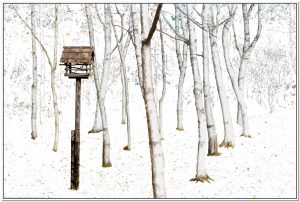Redacted Photography™
The Big Question
Let’s answer the big question first: What was I thinking, turning perfectly good photographs into this?
I’ve been a photographer for as long as I can remember. In High School I shot 35mm slides for multi-screen multi-media presentations. I worked my way through college running a photo processing lab and later selling cameras at the college store. My first paid photography commissions were weddings and corporate portraits.
All the while, I kept asking myself…what’s next. What more can I do.


What More?
Or less?
A few years ago, I realized I was asking the wrong question. Instead of asking “What more?” I decided I should be asking “What less?” It occurred to me that writers, composers and painters all start with a blank page from which they build. Photographers, on the other hand, start with a largely complete product (or at least a fully recognizable subject,) and then they refine.
But what if I went the other way? What would an image look like if the photograph was deconstructed or, as I refer to it…
Redacted Photography™
Because what isn’t there may end up being as important as what is.
I began removing elements non-central to the subject, soon realizing what I had was the look of an unfinished portrait, something reminiscent of Gilbert Stuart’s famously unfinished “Washington.”
Then I thought, “What if I reduced the color information to something more “painterly” where details were described in swaths of flat color and staccato line. So I manipulated…and removed… and altered until I developed the work you see today.


The Metaphor
This may help…
As I worked on image after image, it occurred to me that my subconscious may have been taking a creative lead on the project. About the time I was developing Redacted Photography™ series, a loved one was developing early signs of dementia. Concurrently a family member of a very close friend was battling Alzheimer syndrome. Being a touch of a hypochondriac, I began to ruminate on the possibility that I, too, was suffering memory loss. The images, therefore, became a metaphor of the transience, or more precisely, the imprecision of memory.
Tom Saknit Redacted Photography™ Fine Art Photography